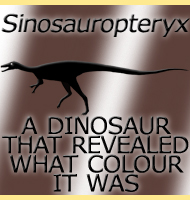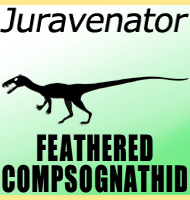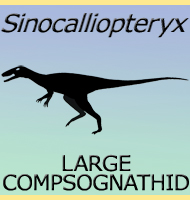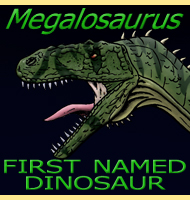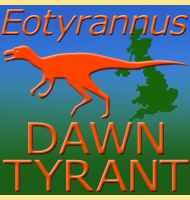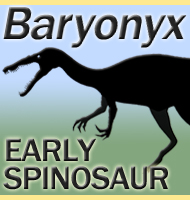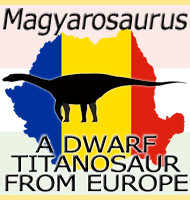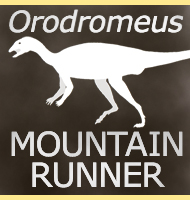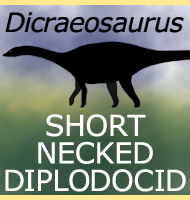


Scipionyx
Name: Scipionyx
(Scipio’s claw).
Phonetic: Sip-e-oh-nicks.
Named By: Marco Signore & Cristiano dal
Sasso - 1998.
Classification: Chordata, Reptilia, Dinosauria,
Saurischia, Theropoda, Coelurosauria, Compsognathidae.
Species: S. samniticus
(type).
Diet: Carnivore.
Size: Holotype estimated to have been 50
centimetres long, though this is of a juvenile. Fully grown adults
estimated to have been around 2 meters long.
Known locations: Italy.
Time period: Albian of the Cretaceous.
Fossil representation: Almost complete juvenile
individuals, including soft tissue impressions of the internal organs.
The holotype specimen of Scipionyx was first discovered in 1981, though it did not garner wider attention until 1993 when its existence was announced to the wider public. It would not be until 1998 however that the genus and species name Scipionyx samniticus would be created. The holotype was discovered by amateur palaeontologist Giovanni Todesco who then took the specimen home and prepared it himself. During this time and thinking that he had a primitive bird, Todesco added a tail made from polyester resin to the specimen, however when this was removed before the official naming of Scipionyx in 1998, the soft tissue remains of internal organs were discovered. It is the soft tissue impressions of the holotype that have made Scipionyx one of the most exciting dinosaur discoveries. Another fact that adds to the excitement of the Scipionyx genus is that it is the first dinosaur to be discovered and named in Italy.
Scipionyx
was a compsognathid
dinosaur, a type of small theropod that would
have been near the bottom of the predatory food chain. Because the
holotype specimen of Scipionyx, and at the time
of writing remains
the only known specimen, is a juvenile the true adult size of the
species can only be speculated. Other compsognathids however
typically range between one and a half an two meters in length, with
a few exceptions slightly shorter and longer than this range.
Although the fossils of compsognathid dinosaurs have been recovered
from all over the world, European finds of these dinosaurs are well
documented. This may be because during the Mesozoic Europe was more
of a chain of smaller islands rather than the mostly singular landmass
that it is today, and the reduced amount of space would have better
suited to smaller dinosaur types such as compsognathids (though
larger theropod types such as spinosaurs,
megalosaurs, allosauroids
and tyrannosaurs
are also known).
Another
factor about the Scipionyx holotype that must be
born in mind is that
the body proportions of the juvenile were probably not an exact match
for the adult. The snout in particular is very short on the holotype
specimen, but this is a common trait seen in the juveniles of other
dinosaurs. As individual Scipionyx matured, the
snout would
probably lengthen to be more similar to other known compsognathid
genera.
As
already briefly mentioned above, the remains of soft tissues have
been the key area of study regarding Scipionyx.
These remains include
muscles, ligaments, cartilage, intestines, blood vessels,
part of the respiratory system, horn sheaths and softer bone
tissues. The rock within which the specimen shows a reddish stain in
the rock probably from a blood rich organ like the heart or the
spleen. It should be remembered that this stain was left not so much
by the blood but from the iron oxide that was once suspended in the
blood. This iron oxide would have been a constituent part of the
haemoglobin in the blood that would have allowed oxygen to be carried
in the blood stream.
One
of the most revealing features of the holotype is the digestive tract.
This has not been preserved in whole, but it can still be followed
due to observable stomach contents and faecal matter. The stomach
itself is not present, probably due to the soft tissues being
dissolved by stomach acid before the tissue of the stomach could be
preserved. Some stomach contents however have been preserved and
these show the remains of fish and lizards, revealing the kind of
animals that juvenile compsognathids ate. Due to their inherent small
size, compsognathids are also widely believed to have been predators
of smaller vertebrates in adult life too, possibly occasionally
scavenging the carcasses of larger animals. The presence of a
muscular gizzard in Scipionyx has been credited as
being likely though
now gastroliths were found with the holotype. It may be that
gastroliths were not present because of the young age of the Scipionyx
holotype, or perhaps they were simply not used at all even in
adults. Some theropod dinosaurs however have been found with
gastroliths, one well known example being Lourinhanosaurus
from
Portugal.
The
respiratory system in the Scipionyx holotype is
only partially
preserved, but it has still been a matter of contention amongst
palaeontologists. One study (Ruben et al, 1999) identified the
presence of a diaphragm by a reddish colouration on the rock. In
addition to this the study noted that the liver would have been of a
large size, indicating that the internal arrangement was dissimilar
to birds. This study concluded that the respiratory system of
Scipionyx was more like that of a crocodile than a
bird.
A
later study however (dal Sasso & Maganuco, 2011) cast
serious doubts upon the crocodilian hypothesis. They pointed out that
the ‘fibrous muscle’ of the supposed diaphragm was actually a
product of the fossil preparation process when the specimen was
polished. They also pointed out that large livers are known in some
types of birds. In addition to that it was noted the liver may have
also been squashed and distorted during fossilisation to give the false
impression of being larger than it truly was in life. The wider
modern consensus today is that Scipionyx, like
other theropod
dinosaurs, were distinctly more bird-like than crocodile-like.
Further reading
- Prima segnalazione di uno scheletro fossile di dinosauro
(Theropoda, Coelurosauria) in Italia (Cretacico di Pietraroia,
Benevento), - Paleocronache 1993: 7-14 - G. Leonardi
& G. Teruzzi - 1993.
- Scipionyx samniticus (Saurischia,
Theropoda): the first
Italian dinosaur - Third European Workshop on Vertebrate
Paleontology, Abstract: 23 - Marco Signore &
Cristiano dal Sasso - 1998.
- Exceptional soft tissue preservation in a theropod dinosaur from
Italy - Nature, 392: 383-387. - Marco Signore &
Cristiano dal Sasso - 1998.
- Scipionyx samniticus (Theropoda:
Coelurosauria) and its
exceptionally well preserved internal organs - Journal of
Vertebrate Paleontology 18 (3): 37A - Marco Signore
& Cristiano dal Sasso - 1998.
- Pulmonary Function and Metabolic Physiology of Theropod Dinosaurs
- Science 283 (5401): 514–516 - John A. Ruben,
Cristiano Dal Sasso, Nicholas R. Geist, Willem J. Hillenius,
Terry D. Jones and Marco Signore - 1999.
- Scipionyx samniticus (Theropoda:
Compsognathidae) from the
Lower Cretaceous of Italy - Osteology, ontogenetic assessment,
phylogeny, soft tissue anatomy, taphonomy and palaeobiology, -
Memorie della Societ� Italiana de Scienze Naturali e del Museo Civico
di Storia Naturale di Milano XXXVII(I): 1-281 - Cristiano dal
Sasso & Simone Maganuco - 2011.
----------------------------------------------------------------------------
Random favourites
 |
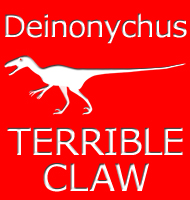 |
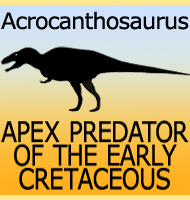 |
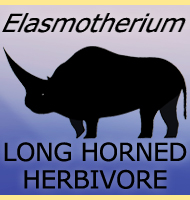 |
